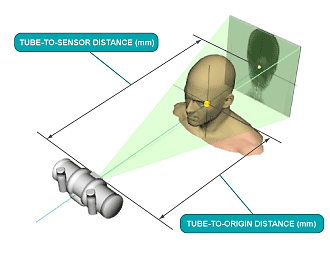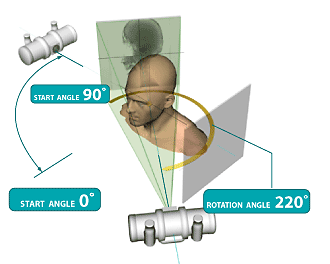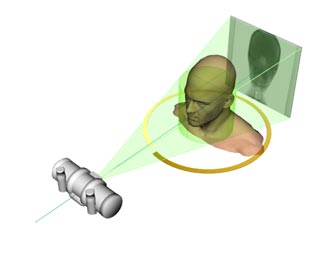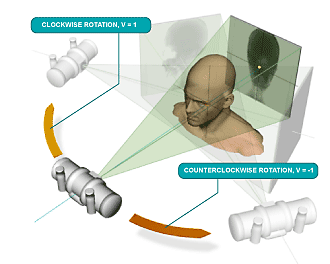Conventional Cone-Beam CT Scanner. Describing hardware geometrical characteristicsCone-beam scanner with stable reproducible geometry There are X-Ray source and two-dimensional (aerial) detector (sensor) moving around a scanned object (sample). Source and detector are connected and move synchronically in opposite directions by accurate round trajectories. A normal ray (perpendicular to axis of rotation) is moving within the same plane and is always hitting the detector in the same spot. During its motion, source is shooting short x-ray pulses exposing an object and a detector behind it. X-Ray pulses are being made on equiangular positions of source trajectory. Distances between source, detector and axis of rotationScan and start angleTube and detector motion during a cone-beam scanDescribing source and detector (gantry) motion To make an accurate reconstruction it is necessary to know positions of source and detector in every spot where x-ray beam exposes an object. Cobra utilizes the following parameters illustrated on this page. Direction of rotation |
||
 |
Describing a reconstruction task
Tags controlling scanner geometry
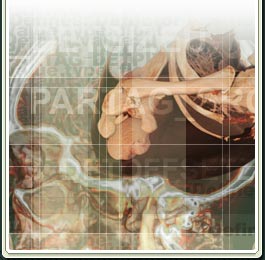
 Source data and supported X-Ray hardware
Source data and supported X-Ray hardware 



